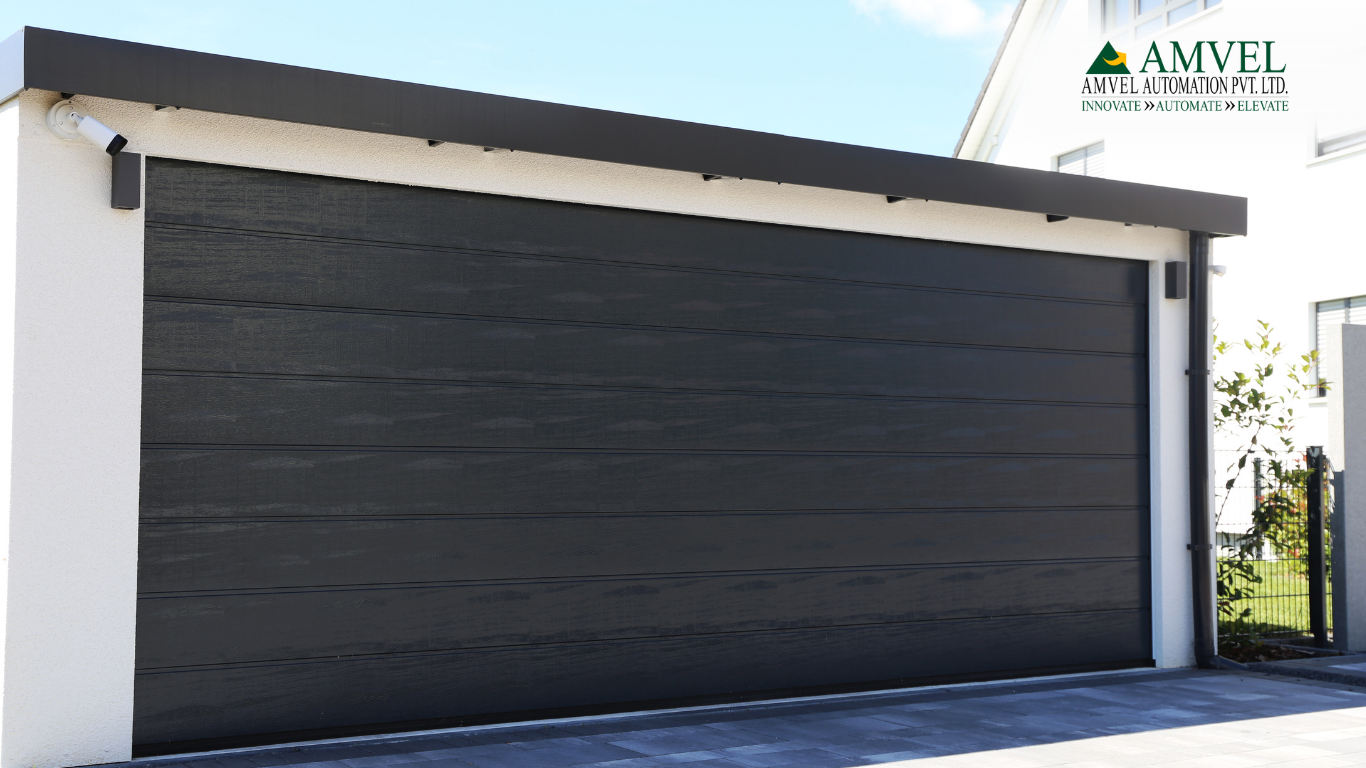Table of Contents
ToggleIntroduction
When it comes to optimizing access points in industrial, warehouse settings, choosing the right door system is essential. Doors do much more than simply provide entry and exit; they influence energy efficiency, security, speed of operation, and overall workflow. High speed doors and conventional sectional overhead doors are two popular options, each with distinct benefits suited to different needs.
High speed doors are designed for rapid access and are ideal in environments that prioritize speed and efficiency, such as warehouses and distribution centers. In contrast, conventional sectional overhead doors provide reliable, cost-effective solutions for lower-traffic applications, like residential garages or small businesses.
In this blog, we’ll explore the features, advantages, and key differences between high speed doors and conventional sectional overhead doors. By understanding their unique qualities, you’ll be better equipped to choose the right door type for your specific requirements, ensuring a lasting, effective solution.
What Are High-Speed Doors?
High-speed doors are advanced industrial doors designed for rapid opening and closing to facilitate smooth, efficient traffic flow in commercial and industrial settings. Built for durability, these doors reduce energy loss, control temperature, and improve security in environments like warehouses, manufacturing facilities, and cold storage areas.
Why Are High-Speed Doors Important?
High-speed doors are crucial in fast-paced environments where efficient movement and climate control are essential. By minimizing the time doors remain open, they enhance energy efficiency, maintain controlled environments, and streamline operations, reducing contamination risks and improving security and productivity in industrial and commercial spaces.
How Do High-Speed Doors Work and Where Are They Used?
High-speed doors use powerful motors and specialized control systems to open and close rapidly, often with speed adjustments for smooth operation. Sensors detect approaching traffic, triggering automatic responses. Commonly used in industries like food processing, pharmaceuticals, logistics, and warehousing, high-speed doors optimize workflow, control temperatures, and provide quick, secure access.

Applications
- Cold Storage Facilities: High-speed doors maintain cold temperatures by minimizing air exchange, preserving inventory and reducing energy costs in food storage and pharmaceutical facilities.
- Manufacturing Plants: Rapid action doors keep contaminants out, enabling clean room operations, and ensure a streamlined workflow in high-traffic areas.
- Automotive Industry: High-speed doors in assembly plants facilitate quick, secure movement of parts and materials while reducing heat and noise loss.
- Airports: Used in secure zones and cargo areas, these doors balance rapid access with security measures, improving operational efficiency.
- Food Processing Facilities: High-speed doors prevent contamination by separating areas, meeting hygiene standards, and maintaining temperature for quality control.
- Warehousing and Logistics: High-speed doors expedite loading and unloading, ensuring the smooth movement of goods and helping maintain climate control.
- Pharmaceutical Facilities: These doors separate clean rooms from production areas, ensuring contamination control and meeting strict regulatory standards.
- Retail Distribution Centers: Used in high-traffic areas, they help maintain temperatures and speed up access in busy loading bays.
- Public Transportation Depots: In bus and train depots, high-speed doors minimize noise and temperature fluctuations while controlling entry points.
- Agricultural Storage: These doors protect perishable goods by controlling airflow and maintaining humidity levels in storage facilities.
Frequently Asked Questions
What Are the Benefits of Using High-Speed Doors?
High-speed doors offer numerous benefits, including faster access, enhanced environmental control, increased security, and reduced energy costs by limiting temperature and air fluctuations.
Where Are High-Speed Doors Typically Used?
They are widely used in industrial, commercial, and specialized environments, such as warehouses, cold storage, pharmaceuticals, and clean rooms, where rapid access and environmental management are critical.
How Do High-Speed Doors Save Energy?
By opening and closing rapidly, high-speed doors limit the amount of air exchange between controlled and uncontrolled environments, reducing heating or cooling loss and thus saving energy.
Are High-Speed Doors Safe?
Yes, high-speed doors are equipped with sensors and safety mechanisms to detect objects or people in their path, preventing accidents and ensuring safe operation.
What Types of Materials Are Used in High-Speed Doors?
High-speed doors are typically constructed from durable materials like PVC, aluminum, or stainless steel, which can withstand frequent use and harsh environments.
Can High-Speed Doors Be Customized?
Yes, high-speed doors can be tailored in size, color, material, and other specifications to suit different industrial requirements and aesthetic preferences.
How Are High-Speed Doors Installed?
They are generally installed by professional technicians, as installation involves configuring sensors, motor systems, and integration with control panels or automation systems.
Do High-Speed Doors Require Maintenance?
Regular maintenance is recommended to ensure optimal performance, as the high-speed operation can lead to wear and tear. Preventive maintenance can extend the door’s lifespan and reduce repair costs.
Can High-Speed Doors Be Used Outdoors?
Yes, certain high-speed doors are designed for outdoor use, with weather-resistant features to endure external elements like rain, wind, and temperature variations.
What Industries Benefit Most from High-Speed Doors?
Industries like logistics, food and beverage, pharmaceuticals, automotive, and data management benefit greatly due to their need for efficient workflows and controlled environments.
What Are Industrial Sectional Overhead Doors?
Industrial sectional overhead doors are large, durable doors designed for industrial use in warehouses, factories, and loading docks. These doors open vertically and consist of hinged horizontal panels that slide along a track, allowing efficient use of overhead space and easy access for equipment and vehicles.
Why Are Industrial Sectional Overhead Doors Important?
Industrial sectional overhead doors are essential in industrial environments because they provide secure, energy-efficient, and space-saving entry solutions. Their sturdy construction withstands heavy use and harsh conditions, while their insulation capabilities help maintain temperature control, reducing energy costs and enhancing operational efficiency in facilities.
How Do Industrial Sectional Overhead Doors Work and Where Are They Used?
These doors operate by sliding upwards along vertical tracks and then horizontally along overhead tracks. Electric or manual mechanisms enable smooth opening and closing. Commonly found in manufacturing plants, distribution centers, and logistics hubs, they facilitate the movement of goods and vehicles while optimizing space usage within the facility.
Key Features
- Insulation Panels: Panels with insulation help in energy efficiency and temperature control within industrial spaces.
- Durable Track Systems: Heavy-duty tracks provide support for the frequent movement of the door panels.
- Sealing Systems: Weather-resistant seals help protect the internal environment from external elements like dust and moisture.
- Automated Control Systems: Allows for remote or sensor-activated control, enhancing operational convenience.
- Safety Features: Equipped with anti-fall mechanisms, sensors, and emergency release systems to prevent accidents.

Applications
- Logistics Centers: Doors facilitate easy entry for loading and unloading shipments, essential in fast-paced logistics.
- Food Processing Plants: Used to maintain controlled environments while allowing for the quick transport of food products.
- Agricultural Storage: Protects crops or equipment from external elements while allowing ease of access for machinery.
- Airplane Hangars: These large, sectional doors provide secure, weather-resistant access for aircraft storage areas.
- Public Transport Garages: Used in bus or train garages, enabling secure access to large vehicles with efficient space management.
Frequently Asked Questions
What Are Industrial Sectional Overhead Doors Made Of?
They are typically constructed from steel, aluminum, or composite materials to ensure durability, with insulation options for temperature regulation.
How Are These Doors Operated?
They can be operated manually or automatically using motorized systems controlled by remotes or sensors.
Can Industrial Overhead Doors Be Customized?
Yes, they can be customized for size, insulation level, color, and additional safety features to meet specific industrial requirements.
How Do These Doors Improve Operational Efficiency?
They allow easy, rapid access for vehicles and goods, reducing downtime and improving workflow in industrial facilities.
Are Industrial Sectional Overhead Doors Weather Resistant?
Yes, most models are designed with weather-resistant seals and durable materials to withstand extreme conditions.
What Safety Features Are Available for These Doors?
Standard safety features include sensors, emergency release mechanisms, and anti-fall devices for accident prevention.
How Long Do Industrial Sectional Overhead Doors Last?
With proper maintenance, these doors can last 15-20 years, depending on usage and environmental conditions.
Can These Doors Be Repaired if Damaged?
Yes, many components like panels, tracks, and motors are replaceable, making repairs relatively straightforward.
What Maintenance Do Industrial Sectional Overhead Doors Require?
Regular maintenance includes checking tracks, lubricating moving parts, and ensuring sensors and safety systems function correctly.
| Features | High-Speed Doors | Industrial Sectional Overhead Doors |
|---|---|---|
| Opening Speed | Designed for rapid operation, opening and closing within seconds to minimize air exchange and improve workflow efficiency. | Open and close at a slower speed, primarily suitable for occasional access rather than constant, quick operation. |
| Environmental Control | Ideal for environments needing strict control over temperature, humidity, and dust, such as cold storage and clean rooms. | Provide basic insulation but are less effective for maintaining precise environmental control. |
| Durability and Construction | Built with flexible, lightweight materials like PVC to withstand frequent, high-speed operation. | Made of rigid, heavy-duty materials like steel or aluminum, providing higher impact resistance and durability for tough industrial use. |
| Use Case Suitability | Best suited for high-traffic areas requiring fast access, such as logistics centers, manufacturing plants, and clean rooms. | Suited for loading docks, warehouses, and storage facilities where door speed is less critical. |
| Maintenance Requirements | Require regular maintenance due to high frequency of operation and reliance on electronic controls and sensors. | Typically require less frequent maintenance due to slower operation and simpler mechanical design. |
| Cost | Generally more expensive due to advanced motor systems, safety sensors, and specialized materials designed for rapid operation and frequent use. | Typically less expensive than high-speed doors. They have simpler mechanisms and materials, which results in lower initial costs and reduced maintenance expenses over time. |
Conclusion
Choosing the right door solution is crucial for enhancing efficiency, security, and energy savings in Industrial operations. High speed doors and conventional sectional overhead doors each offer unique advantages tailored to different applications. High speed doors excel in high-traffic environments, offering quick access, improved energy efficiency, and enhanced safety.
On the other hand, conventional sectional doors provide a cost-effective and reliable option for less demanding applications. By understanding the specific needs of your business or residence, you can make an informed decision that maximizes value and long-term performance.
Amvel Automation leading manufacturer of high speed doors , Sectional Doors in entire south India we are committed to providing innovative, high-quality solutions to meet diverse operational requirements, ensuring your success and satisfaction every step of the way.



